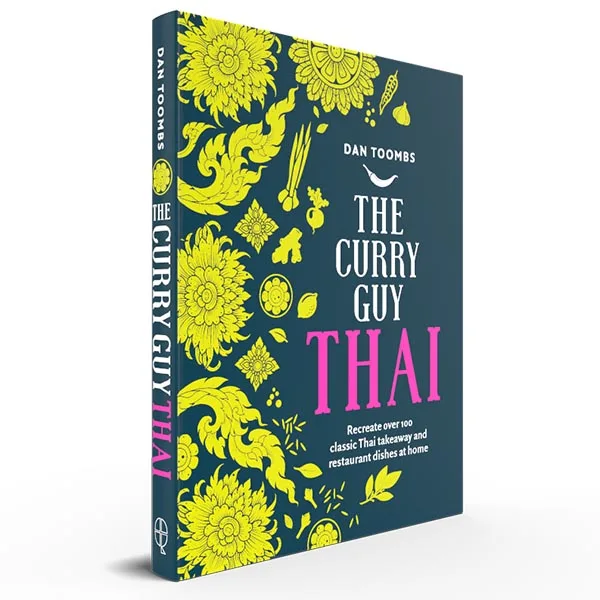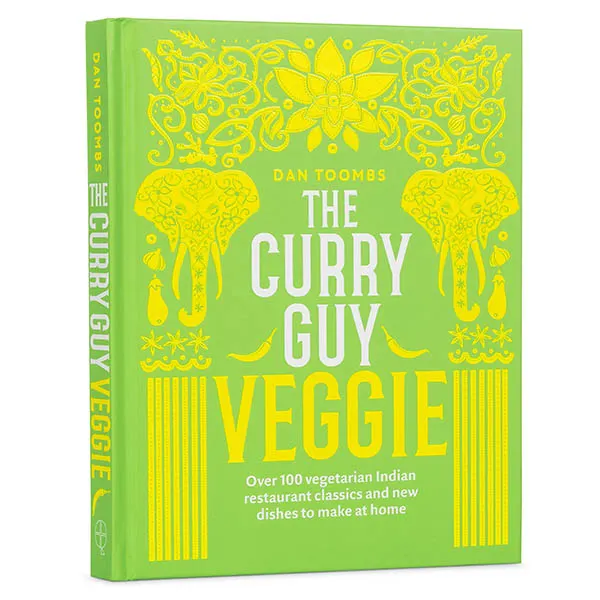Gatte ki sabji is a delicious vegetarian curry that meat-eaters will love too.
The main reason I like to travel is to learn new recipes. This week I am in Jaipur, Rajasthan in India and I am loving the vegetarian curries popular here such as this gatte ki sabji.
I would not normally go for the vegetarian option but while staying at The Pink City Cooking School, I have grown to love every veggie curry we have made. You really do need to try this gatte ki sabji whether you are a vegetarian or a big fan of meat. You are going to love it.

What is gatte ki sabji?
Gatte ki sabji is a popular vegetarian dish from the Indian state of Rajasthan. It is made with gatte, which are gram flour (besan) dumplings cooked in a flavorful yogurt-based curry.
The dumplings are typically seasoned with various spices like cumin, coriander, turmeric, and chilli powder before being boiled or steamed and then added to the curry.
Since making this gatte ki sabji at the class, I have tried it a few other places and it is always good. I might be a bit biased but I think this gatte ki sabji recipe is the best out there!
How do you make the gatte (chickpea dumplings)?
The gatte, small gram flour dumplings, are what makes this curry unique and satisfying. They are really easy to prepare.
All you need to do is mix the gram flour with the spices bicarbonate of soda (baking powder) and oil. The flour mixture will look a bit crumbly. Then stir in just enough water to make a soft and workable dough
Do you need to use the bicarbonate of soda (baking powder)?
Yes, the bicarbonate of soda is important. It makes the dumplings plump up when simmered in water and gives them a much nicer texture.
What do you serve with gatte ki sabji?
Gatte ki sabji is often served with rice or Indian breads like roti, chapati, or naan. It’s a hearty and comforting dish that showcases the rich and vibrant flavors of Rajasthani cuisine.
How long can you keep the leftovers?
As there is no meat, you should be able to keep this in the fridge for at least 5 days. Then just bring it slowly to a simmer in a saucepan to heat it up and serve.
Can you freeze gatte ki sabji?
You could but I don’t recommend doing it as the texture of the yoghurt sauce will change and it won’t be as good.
Are there any variations of this recipe?
There really is so much you can do with this gatte ki sabji. This is a really simple version of the recipe.
If you like, you could add other chopped vegetables such as potatoes, cauliflower, broccoli and peas. When doing this, I like to add them right at the end of cooking cooking and cut them really small.
Just cook them through and be sure not to overcook anything!
Step by step photographs.

Mix the gram flour with the other gatte ingredients together in a mixing bowl.

Work the oil right into the flour mixture and then add just enough water to make a soft and easy to work with dough.

Add just enough water to the flour to make a soft dough. It should be soft and easy to work with.

Add the dumplings to the boiling water and let them cook for about 10 minutes. They will plump up as they cook.

Once cooked, slice the gatte into bite sized pieces and transfer to a plate. Retain the cooking water.

While the dumplings are cooking, you can whisk the yoghurt, Kashmiri chilli powder, ground coriander and turmeric together and well combined and smooth. Set aside.

In another pan, heat the oil over a medium-high heat and add the mustard seeds, when they begin to crackle, stir in the cumin seeds, asafoetida and fenugreek leaves.

Pour the yoghurt into the pan and stir continuously to avoid curdling. Add a little water to the remaining yogurt and swish it all around so you don’t look a drop of the yoghurt sauce.

About 125ml (1/2 cup) of water should be enough to get every last bit of the yoghurt sauce.

Now add the dumplings and bring everything to a simmer until the dumplings are heated through.

Season with salt to taste and also adjust the other spicing, if needed. The add the chopped coriander and chillies.

Simmer it down until you are happy with the consistence of the sauce and serve hot with chapattis or over rice.
If you like the gatte ki sabji, you might like to try some of the Indian Vegetarian favourites.
Dum Aloo
Pakistani Chickpea Biryani
Punjabi Saag Curry
Punjabi Rajma
Butternut Squash Curry
Sri Lankan Green Beans Curry
Aloo Gobi
Saag Paneer
Onion Pakora Curry
Chana Saag Curry
Potato Curry
Saag Paneer
Mushroom Curry
Masala Corn
Gobi Manchurian
Bombay Potatoes
Masala Dosa
Saag Aloo
Tandoori Hummus
Tarka Dal
Masoor Dal
Dal Makhani
Chana Dal
Homemade Poppadoms From Scratch
Cabbage Thoran
Chai Tea (masala chai)
Have you tried this recipe for gatte ki sabji?
If yes, please give it a star rating in the recipe card below and leave a comment. I love receiving your feedback and I’m sure other readers of my blog do too. Thank you.
If you are not already doing so, please follow me on Instagram and Facebook for all my latest recipes.
Gatte Ki Sabji

Ingredients
- FOR THE GATTE
- 7 tbsp gram flour
- 1 tsp Kashmiri chilli powder
- 1/2 tsp salt
- 1/4 tsp ground turmeric
- 1 tsp fennel seeds
- 1/2 tsp dried mint
- 2 tsp rapeseed (canola) oil
- 1/2 tsp bicarbonate of soda (baking soda)
- 1/4 tsp garam masala
- FOR THE SAUCE
- 250g plain natural yoghurt
- 1 tsp Kashmiri chilli powder (more or less to taste)
- 1 tsp ground coriander
- 1/2 tsp ground turmeric
- 2 tbsp rapeseed (canola) oil or ghee
- 1/2 tsp black mustard seeds
- 1/2 tsp cumin seeds
- 1/2 tsp asafoetida
- 1/2 tsp dried fenugreek leaves (kasoori methi)
- Salt to taste
- 3 green finger chillies,
- 2 tbsp fresh coriander (cilantro), roughly chopped
Instructions
- Bring a saucepan of water to a boil. While the water is heating up, mix the gram flour with the remaining dumpling (gatte) ingredients together in a mixing bowl. Then slowly pour in just enough water to bind it all into a soft dough. The dough should be easy to work and not too hard.
- Divide the dough into about 10 smaller balls and then roll each ball out into a neat little sausage shape that is about 7.5cm (3 inches long. Set aside.
- When your water is boiling, add the sausage dumpling (gatte) to the water and let them simmer for about 10 minutes. As they simmer, they will plump up because of the bicarbonate of soda (baking soda). When nice and plump, turn off the heat and allow it all to cool enough that you can slice the dumplings into smaller bite sized pieces. Set aside.
- Pour the yoghurt into a mixing bowl and add the chilli powder, ground coriander and turmeric. Whisk until smooth and set aside.
- Now heat two tbsp oil or ghee over a medium-high heat. When the oil begins to shimmer, stir in the mustard seeds and when they begin to crackle, stir in the cumin seeds, asafoetida and dried fenugreek leaves (kasoori methi).
- Fry this for about 30 seconds to flavour the oil/ghee and then reduce the heat to medium. Pour in the yoghurt and then add just enough of the water that you cooked the dumplings in to the mixing bowl to swirl around and get all the yoghurt sauce into the pan. About 125ml (1/2 cup) should be enough.
- Slowly bring to a simmer over the medium heat and then add then add the dumplings. Bring to a simmer, stirring often until the dumplings are heated through.
- Taste the sauce and adjust the seasoning. You might want it a bit spicier so add a little more chilli powder if you like. Then season with salt to taste and stir in the chopped coriander (cilantro) and chillies, if using.
- Serve hot over rice or with chapattis or naans.
Notes
If you don't want to make the dumplings, cooked new potatoes are also very good in this sauce as are chickpeas.
Recommended Products
As an Amazon Associate and member of other affiliate programs, I earn from qualifying purchases.
Nutrition Information:
Yield:
4Serving Size:
1Amount Per Serving: Calories: 179Total Fat: 9gSaturated Fat: 5gTrans Fat: 0gUnsaturated Fat: 4gCholesterol: 21mgSodium: 831mgCarbohydrates: 18gFiber: 4gSugar: 9gProtein: 7g








